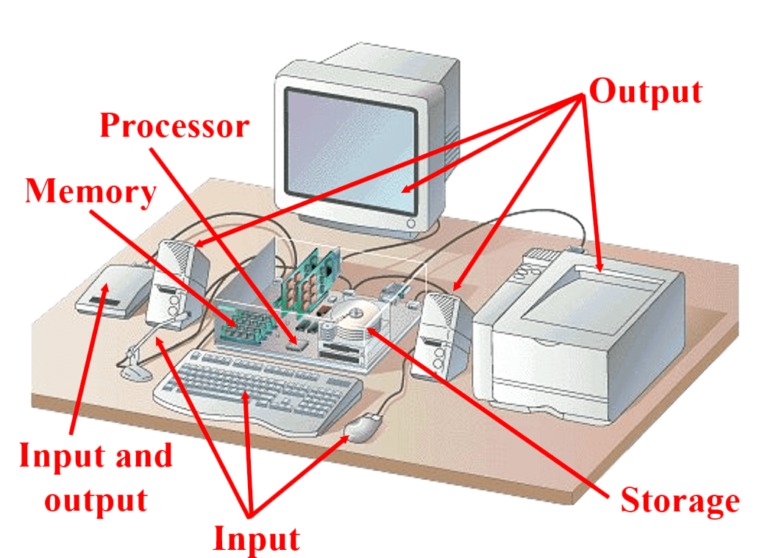Unlocking the Power of Excess Computer Parts in Education
In the current technology-driven landscape, the demand for PC parts is on the rise. Nonetheless, numerous educational institutions and people are looking for more cost-effective alternatives to meet this demand. her response offer an exciting opportunity not only to save money but also to utilize valuable resources that would otherwise go to waste. These parts can be a perfect solution for educational institutions and students looking to build or upgrade computers without spending a fortune.
Comprehending how to explore the world of surplus computer parts can be an transformative experience in education. With the right knowledge and guidance, anyone can find premium components that enhance learning environments and foster practical experience with technology. From choosing the best used motherboard to verifying the performance of surplus RAM, this ultimate guide will provide insights on how to shop wisely, what aspects to take into account, and how to identify the best deals, ensuring a positive experience for all involved.
Purchasing Surplus Digital Components of Computer
Surplus computer pieces are an amazing resource for enthusiasts, educators, and anyone looking to construct or upgrade a computer without breaking the bank. These parts, often sourced from companies upgrading infrastructure or people decluttering, provide an option to obtain high-quality pieces at a reduced rate of the initial price. However, understanding how to navigate learn this here now of excess materials is vital for making wise acquisition judgments.
When you commence shopping for leftover computer components, it is essential to know what you're looking for. Condition assurance is critical, so make yourself familiar yourself with important specifications and criteria for every piece. Whether you’re after a pre-owned main board, GPU, or random access memory, knowing the present pricing trends and typical value can help you spot a great bargain versus a possible rip-off.
Finally, it’s essential to consider the quality and fit of the surplus pieces you are looking at. Not all surplus parts are manufactured equal; some may have undergone considerable utilization and may not work optimally. Understand how to assess the condition of various components, including checking visible defects, verifying functionality, and confirming compatibility with your current setup. By following these guidelines, you will empower yourself to make informed judgments, ensuring that your expenditure in excess digital components yields significant value.
Crucial Suggestions for Assessing and Testing Components
When evaluating excess components, it's essential to evaluate each component's condition and functionality meticulously. Begin by examining the physical condition for any signs of wear, damage, or corrosion. Components like mainboards or power supplies should not have visible burn marks, bulging capacitors, or unsecured connections. Be mindful of the cleanliness of the parts as well; dust and dirt can point to improper storage or neglect, which may affect functionality.
Evaluating is a critical step in assessing surplus components. If possible, utilize suitable systems to check the functionalities of RAM, graphics processing units, and CPUs. Perform stress tests to ensure they can handle the necessary load without excessive heat or malfunctioning. For hard drives and SSDs, check for data transfer rates as well as any potential bad sectors. Utilizing testing equipment can identify underlying issues that might not be visible from a simple visual check.
Interoperability is another aspect to consider when assessing excess parts. Always verify that the components will function with your existing system. Check requirements such as CPU socket types for processors and memory compatibility with mainboards. Additionally, ensure that computer surplus store , such as the power unit and heat sinks, are appropriate for the components you're looking at. By following these recommendations, you can make knowledgeable decisions and increase the value of your surplus computer parts.
Maximizing Worth: Intelligent Approaches for Choosing Surplus Equipment
As you venturing into the world of surplus computing items, having a well-defined approach can significantly enhance the odds of acquiring top-notch components at the optimal costs. Commence by doing thorough study on the specific components you need. Get acquainted oneself with the key details, fitting criteria, and the existing cost of these parts. This information will empower one to identify good deals and help you avoid paying too much or buying substandard parts.
After that, make use of reputable vendors for any surplus purchases. Look for vendors, web-based marketplaces, or forum forums that specialize in surplus gadgets. Customer reviews and evaluations can provide valuable knowledge into the trustworthiness of retailers. Additionally, inquire about refund policies and warranties, as these elements can grant peace of mind if a item does not satisfy one's requirements or fails after acquisition.

Ultimately, foster a discerning ability for possible warning signs. Review parts carefully for any indications of flaws, deterioration, or low condition, which may impact their performance. Use existing resources and tools to test parts whenever practical, guaranteeing they satisfy one's needs before finalizing a purchase. Through being diligent and calculated, you can enhance the worth of the surplus computer gear, transforming it into a significant resource for one's learning or individual projects.